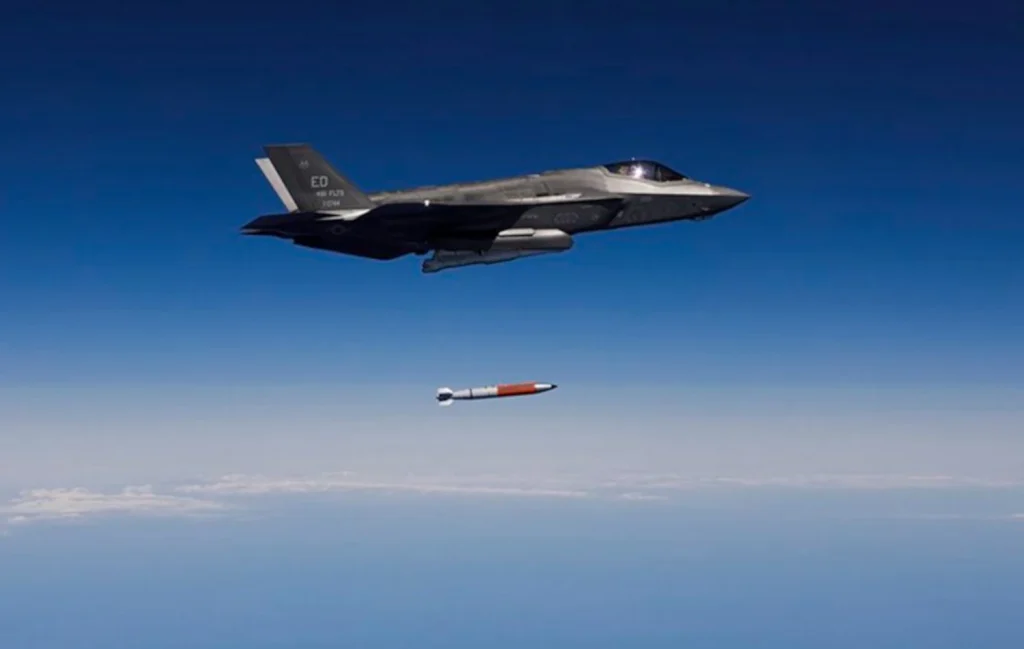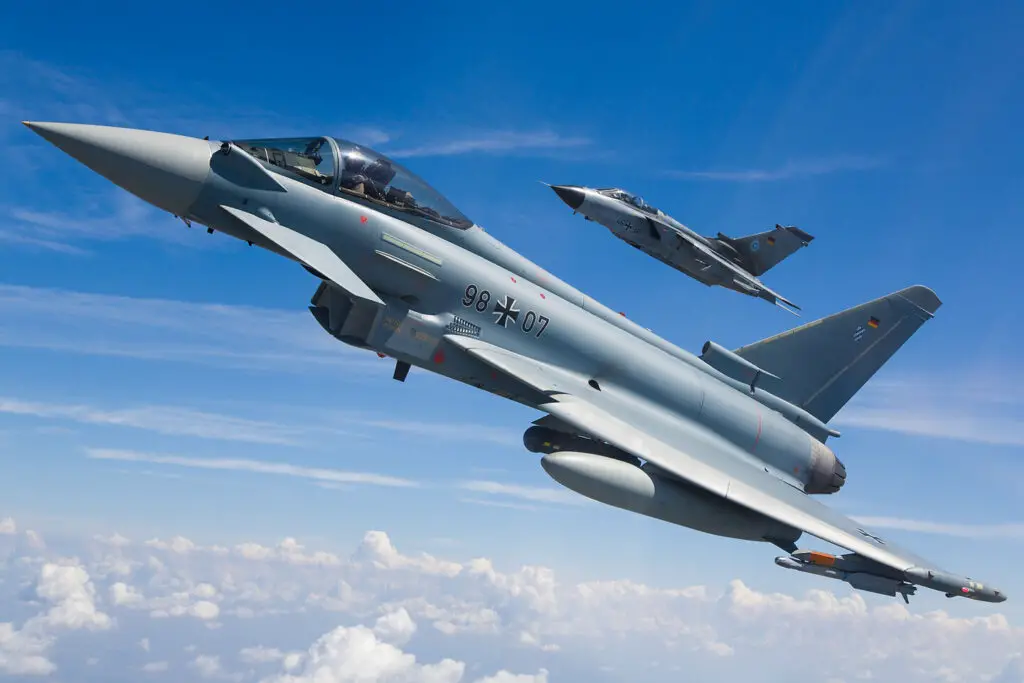The debate over the possible purchase of American multi-purpose supersonic tactical aircraft of the fifth generation F-35A Lightning II has flared up again in Germany. The reason is simple – the F-35A is the only modern and affordable tactical aircraft that is expected to be certified soon to “deliver” tactical nuclear bombs.
The Bundeswehr needs new aircraft that can potentially drop atomic bombs. The new head of department, Christine Lambrecht, is examining how the Air Force’s ageing Tornado fleet should be replaced. An interesting turn of events is now emerging; the US F-35 fighter jet, which was dropped from the selection list three years ago, is back up for debate – and a larger share for Airbus’ Eurofighter.
Background
The then Minister of Defense, Ursula von der Leyen, had decided in January 2019 that proven Eurofighter and the U.S. aircraft F/A-18 in the most modern version Super Hornet Block III should be considered possible successors to the Tornado. In addition, another requirement for a replacement for Electronic Warfare aircraft should be met with the Growler. F-35 was thus expressly off the table. A mix of F/A-18s, Growlers and Eurofighters was considered to replace the Tornado fleet. A decision was not taken.
The new government is mulling whether F-35 aircraft could be an alternative to Tornado’s nuclear role and whether the Eurofighter could also be used for a second task of the Tornado fleet: electronic combat.
Also read – The F-35 Stealth Fighter Jet comes One Step Closer to Carrying Nuclear Weapons
Nuclear Role
Germany, Belgium, the Netherlands, Italy and Turkey are part of the Alliance’s Nuclear Sharing Tactical Bombs Program. There are an estimated 20 B61 tactical nuclear bombs in each country. The bombs are under the control of the U.S. Air Force, and the U.S. President permits to use of these weapons.

The Germans use Tornado IDS strike aircraft from the German elite 33rd Squadron JaBoG (Jagdbombergeschwader 33) based at Büchel in Rhineland-Palatinate, to deliver nuclear bombs. JaBoG has 46 Tornados at its disposal, but they are nearing the end of the life cycle between 2025 and 2030. Germany will be excluded from the program if no replacement can be found.
Not an easy option
Only the much “hated” (in Germany) F-35A Lightning II can carry nuclear bombs. At the same time, up to 66% of Germans are against the presence of American nuclear bombs in the country.
But as per the German strategy paper of 2016, “As long as nuclear weapons can be used in military conflicts, nuclear deterrence will always be needed. NATO’s strategic nuclear capabilities, and of the United States, in particular, are the ultimate guarantee of member states’ security. NATO remains a nuclear alliance. Through Nuclear Sharing, Germany remains an integral part of NATO’s nuclear policy and planning. At the same time, Germany is committed to laying the foundations of a world without nuclear weapons. NATO has adopted this goal as part of its Strategic Concept for 2010.”
The Political aspect
A significant part of the German political spectrum, especially the German Greens, opposes nuclear weapons. However, in the coalition agreement, the new German government (Greens, SPD and FDP) undertook to remain part of the Nuclear Sharing program and replace the “nuclear” Tornado IDS.
But there is strong opposition to nuclear-sharing in the ranks of the ruling Social Democrats (SPD) and the Greens. Nuclear sharing is only supported by the Free Democratic Party (FDP). So the debate on nuclear weapons in Germany is certainly not over.
The German opponents of nuclear weapons can achieve their goal if they delay the purchase of a successor to the Tornado IDS aircraft.
At the same time, the Luftwaffe (the German Air Force) is de facto violating the Nuclear Sharing Agreement. The survival of today’s Tornado IDS aircraft on the modern battlefield is highly debatable – so the question is whether the Tornado IDS are capable of “delivering” nuclear bombs.
Why did Germany drop F-35A?
Berlin had rejected F-35A aircraft in 2019 and stated that it wanted to buy American F / A-18E / F Super Hornets to carry nuclear bombs. The EA-18G Growler aircraft was to replace the Tornado ECR designed for reconnaissance and electronic warfare.
The plan was to replace the entire fleet of German Tornadoes, as well as the oldest Eurofighters Tranche 1, with a combination of Super Hornet (30), Growler (15) and Eurofighter (90) aircraft. So far, Berlin has fulfilled only one part of the plan by ordering 38 new Tranche 4 Eurofighters as the replacement for all Tranche 1. The replacement of 68 Tornado IDS aircraft (including those in 33rd JaBoG Squadron) and 21 ECR aircraft is not yet addressed.
However, the Super Hornet is not certified to carry nuclear bombs. And it is uncertain whether Americans are interested in enabling this certification which could take up to five years. The F-35’s were already under the process of nuclear certification but not yet certified.
The Germans refused to purchase the F-35A, as no official reason for the refusal was given, mainly for political reasons and under pressure from the German aviation industry. The industry argued that the purchase of the F-35A would jeopardize the European Eurofighter program. The European partner, the French, also believes that the purchase of the F-35A could undermine the program of the Franco-German fighter of the sixth generation FCAS (Future Combat Air System) and hence the ability of Europe to develop its own top supersonic tactical aircraft.
The Germans are not very “excited” about the FCAS program either. As per Reinhard Brand, a member of the opposition Christian Democrats (CDU), the French Dassault is not ready to accept German Airbus as an equal partner. The French want to develop FCAS as per their own rules.

Other options
Germany is exploring other options to the F-35A as the German’s do not have access to the source codes. Germany is exploring the ‘European solution’, which includes the nuclear certification of Eurofighters and the development of Eurofighter ECR aircraft. Berlin Airbus has already proposed a new Eurofighter electronic combat role (ECR) concept in 2019.
The German decision is being keenly watched as it affects its relations with the U.S. and France; and Russia and China. The decision will shape the European aviation industry for decades to come. The final decision may not be based on tactical-technical parameters but a sovereign geopolitical reason.
